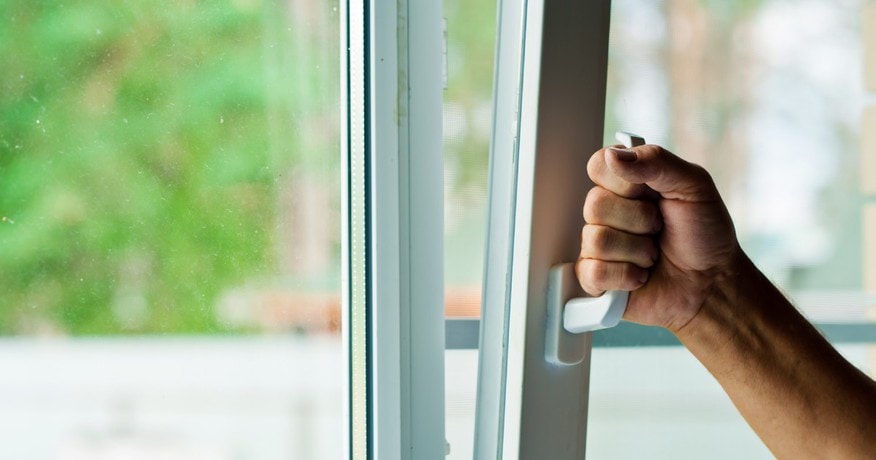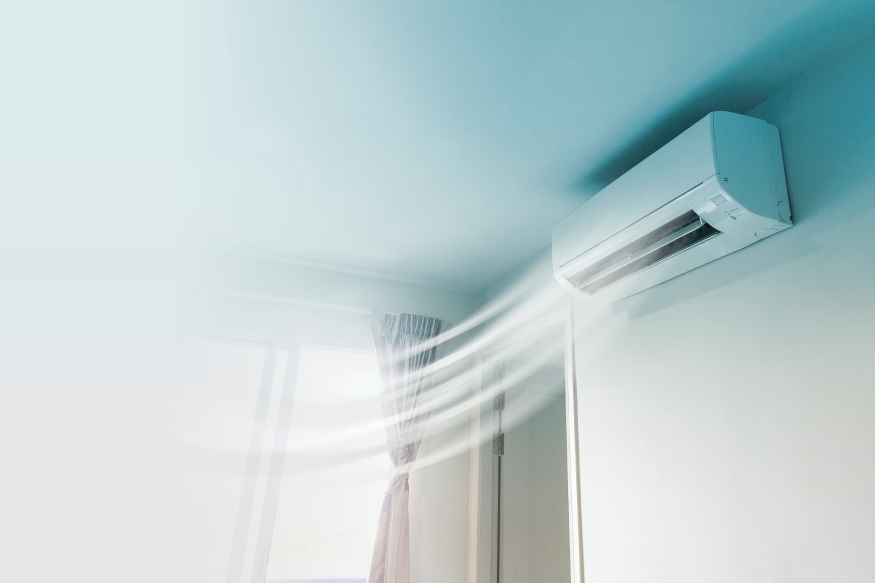Should the windows in your house be cracked when running the AC, or not? It’s a question that gets posted on blogs, Reddit, and HVAC forums all the time. Despite some pretty confusing and questionable responses, the answer to this question is actually fairly straightforward.
In this article, we’ll look at why people often think cracking the windows with the AC on is a good idea and why that notion is false (hint: it has to do with how ACs work). We’ll also look at the one exception to this otherwise very straightforward rule.

Should You Crack a Window While the AC Is On?
The answer is no. You should not crack windows when running the AC, plain and simple. This is because cracking the window while the AC is running causes hot air to come inside and cool air to flow outside, which causes your AC to work less efficiently.
The Argument for Cracking a Window with AC On
If you’ve ever shut your bedroom door while running the AC, then you’ve probably noticed how the air tends to rush out of the crack below the door. This discovery leads many homeowners and home-livers to assume that running the AC causes pressure to build up in the room. And, therefore, relieving that pressure should help the AC push air into the room more efficiently.
One very easy way to relieve this perceived pressure is to crack a window. The idea is that if a bit of air is allowed to escape out the window, the AC will have an easier time pushing cold air into the room.
It sounds logical, but this theory is built on a common misunderstanding of how AC units function.
Why You Definitely Should Not Crack the Window

What really happens when you crack the window while your AC is running? All that freshly-minted cold air escapes your house while warm air makes its way in. And, if it is windy outside, you can expect more warm air to enter your home through the cracked window. Either way, your AC is going to have to work harder to make up the difference.
This movement of air (much like the movement of air under your door) has nothing to do with a build-up of pressure in your home caused by the AC. We know this is true because ACs do not increase the air volume inside your house.
To better understand why this is true, we have to look at how the two main types of ACs operate.
Window Unit ACs
Many people think that because window ACs sit in windows or holes in the wall, they work by pulling hot air in from the outside, cooling it, and pushing it into your house. But this is not actually what’s happening.
The air the unit cools is pulled in from the room, forced over cooling coils, and pushed back into the room. As the coolant heats up, it is pushed to the back of the unit, where a separate fan system pulls air in from the outdoors, forces it over the heated coils, then forces that heated air back outside.
The air stays in the room, and no additional air is added from the outside, so no pressure changes occur.
For a more in-depth explanation of this process, check out the video below.
Portable AC units work similarly, except that the air forced over the heated coils is pulled in from the room and then pushed outside. These units actually create a negative pressure that makes it even more likely to push hot air into the room if the window is cracked.
Central Unit ACs
Central AC systems work similarly to window units but on a much larger scale.
The air in your home is pulled through the receiving vents, through the blower in your furnace, and into the evaporator where it is cooled. It is then forced through the ducting and back into your home. This same air is recycled over and over again.
Outside the home, the AC unit houses the compressor, condenser, and fan, which work together to pull outside air in, force it over the heated coolant, and then blow it back outside. Once cooled, this coolant returns to the evaporator inside your home.
No air is exchanged between the inside and outside, so no pressure change occurs.
Below is a great video detailing this process.
A Note on Swamp Coolers
If your home is cooled using evaporative cooling rather than air conditioning, your system creates pressure as it runs. In this case, cracking the windows in the rooms of your home farthest from your swamp cooler will help pull that cool air throughout the house.
Learn More: Read about the different types of cooling here.
The (Kind Of) Exception to the Rule
There is one exception to the rule of keeping windows closed while the AC is on… kind of.
When the outside temperature is lower than the temperature inside your house, you are better off opening all your windows and using fans to force the hotter air out.
But, even in this case, you don’t want the windows open or even cracked when the AC is on. Instead, open them for about 20 to 60 minutes to allow the house to cool to match the outside temperature. Once the house has cooled, you should then close all the windows and turn the AC on to cool your home further.
Keep Those Windows Closed
Because air conditioners do not build up pressure in the home, cracking a window does not help them operate more effectively. In fact, cracking a window will only cause your AC to have to work harder since cool air is likely to escape through the cracked window while warm air sneaks in.
Still have questions? Post your comments below, and we’ll be happy to help.
